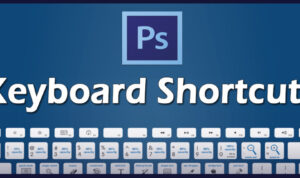In the fast-evolving world of real estate marketing, visual presentation is more crucial than ever. Buyers and renters make snap judgments based on the images they see, often before reading a single line of text. In this landscape, Photoshop and other advanced graphic tools play a major role in creating captivating, high-quality marketing materials that stand out in a competitive market.
As we move through 2025, real estate marketing continues to push boundaries. With new Photoshop features and emerging design trends, real estate professionals are finding even more creative ways to present properties. In this article, we’ll explore the top Photoshop trends shaping real estate marketing materials this year and how agencies, agents, and designers can harness them to make lasting impressions.
Why Photoshop Matters More Than Ever in Real Estate Marketing
Photoshop has been a cornerstone tool for real estate marketing for decades, but its role has evolved dramatically. It’s no longer just about touching up a photo to fix bad lighting or removing minor blemishes. Today, Photoshop enables:
-
Complete virtual staging of empty rooms.
-
Hyper-realistic renovation previews.
-
Creation of aerial composites and community lifestyle imagery.
-
Development of personalized branding assets.
-
Consistent visual storytelling across platforms.
With buyers expecting highly polished and emotionally compelling experiences, Photoshop is a must-have tool in the real estate marketer’s arsenal in 2025.
Top Photoshop Trends in Real Estate Marketing for 2025
1. Hyper-Realistic Virtual Staging
Virtual staging isn’t new, but in 2025, it’s reached new heights of realism thanks to AI-enhanced Photoshop plugins and tools. Instead of basic overlays, designers now create immersive environments where every detail — from the light reflection on a vase to the fabric texture of a sofa — feels real.
Key Features:
-
Realistic shadowing and lighting integration.
-
Customization to reflect local market tastes (e.g., modern, farmhouse, luxury).
-
3D rendered furniture and decor that can be layered seamlessly into the space.
Why It Matters:
Buyers can better visualize themselves living in the property, even when viewing an empty unit.
2. Lifestyle-Driven Edits
Today’s real estate buyers want to know more than just the square footage — they want to feel the lifestyle a property offers. Photoshop is being used to add lifestyle elements into property imagery subtly.
Examples:
-
Adding people enjoying a backyard space without making the image feel “stocky.”
-
Lightly showcasing lifestyle accessories like yoga mats in home gyms or gourmet kitchen setups.
-
Including pets or children playing safely in common areas.
Pro Tip:
Use Photoshop’s new neural filters to create authentic, diverse representations without over-editing.
3. Enhanced Sky Replacement and Weather Effects
A gloomy sky can drastically affect how a property feels. Thanks to powerful AI sky replacement tools in Photoshop 2025, real estate marketers can now:
-
Swap out overcast skies for sunny, golden-hour lighting in seconds.
-
Match lighting and shadows naturally across the entire image.
-
Create customized weather moods (clear, dramatic sunset, slight clouds) depending on the target demographic.
Why It’s Trendy:
Properties feel more vibrant and inviting, improving emotional engagement without misleading buyers.
4. Cinematic Color Grading
Cinematic color grading — long popular in the film and photography industries — is now making its way into real estate marketing. With Photoshop’s advanced color grading tools, marketers are:
-
Giving properties a distinct mood (e.g., cozy and warm vs. sleek and modern).
-
Enhancing architectural features through color contrasts.
-
Creating consistency across all marketing materials, from online listings to print brochures.
Top Techniques:
Use Photoshop’s Color Lookup Tables (LUTs) and Camera Raw Filter to apply consistent cinematic looks across property portfolios.
5. Interactive and Layered Compositions for Digital Brochures
In 2025, real estate brochures are going fully digital and interactive. Photoshop’s smart object and layer features are key for designing materials where viewers can:
-
Click to reveal different room staging options.
-
See before-and-after renovation concepts.
-
Switch between daylight and evening views of a property.
Impact:
Interactive designs create an engaging experience, boosting buyer interest and time spent on listings.
6. Augmented Reality (AR) Ready Designs
Photoshop is increasingly being used to create assets that are optimized for augmented reality applications. Real estate companies are layering AR capabilities onto their listings, allowing users to:
-
View furniture placement through their smartphones.
-
Walk through a virtually staged home from their living room.
Photoshop’s new features in 2025 make it easier to export layered 3D models and textures directly for AR use.
7. Minimalist Text Overlays and Branding
Instead of cluttering images with lots of text, the trend now leans heavily toward minimalism. Photoshop templates today favor:
-
Small, clean fonts.
-
Subtle logo placement.
-
A focus on letting the property imagery speak for itself.
This helps listings look premium, upscale, and modern — qualities that resonate especially with millennial and Gen Z buyers.
Best Practices for Using Photoshop in Real Estate Marketing
To get the most from Photoshop in 2025, real estate professionals should follow these best practices:
Stay Ethical
While enhancing images is expected, it’s important not to mislead. Photoshop should be used to showcase a property’s best features — not to fake features that don’t exist.
Optimize for Mobile Viewing
Most buyers first encounter listings on their smartphones. Always test Photoshop-edited images on smaller screens to ensure clarity and impact.
Maintain Consistency Across Platforms
Use Photoshop’s libraries and style guides to ensure that colors, logos, and branding remain consistent across websites, social media, print materials, and digital ads.
Keep File Sizes in Check
High-res images are beautiful but can slow down website load times. Use Photoshop’s export features to optimize image sizes without compromising quality.
Tools and Plugins Enhancing Photoshop Workflows in 2025
To meet new demands, many real estate marketers are pairing Photoshop with additional tools, such as:
-
Luminar Neo: For AI-powered sky replacements and enhancements.
-
Topaz Labs: For noise reduction and image sharpening.
-
Canva Pro integration: Quick resizing for different platforms.
-
AR Creators: Photoshop plugins that prep images for AR environments.
Using the right stack of tools can drastically reduce editing time while improving output quality.
Conclusion
As real estate marketing grows ever more competitive, Photoshop is no longer just a photo editing tool — it’s a full-fledged marketing engine. In 2025, the ability to create emotionally resonant, visually stunning marketing materials will make the difference between listings that languish and listings that close quickly.
From hyper-realistic virtual staging to cinematic color grading and AR-ready compositions, today’s Photoshop trends empower real estate professionals to tell richer, more compelling property stories. Those who adapt to these trends — and master the latest tools — will capture more leads, close more deals, and build stronger brands in the ever-evolving real estate landscape.
In real estate, first impressions matter more than ever — and thanks to Photoshop, making the right impression has never been easier or more exciting.








